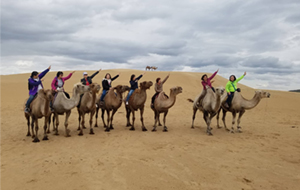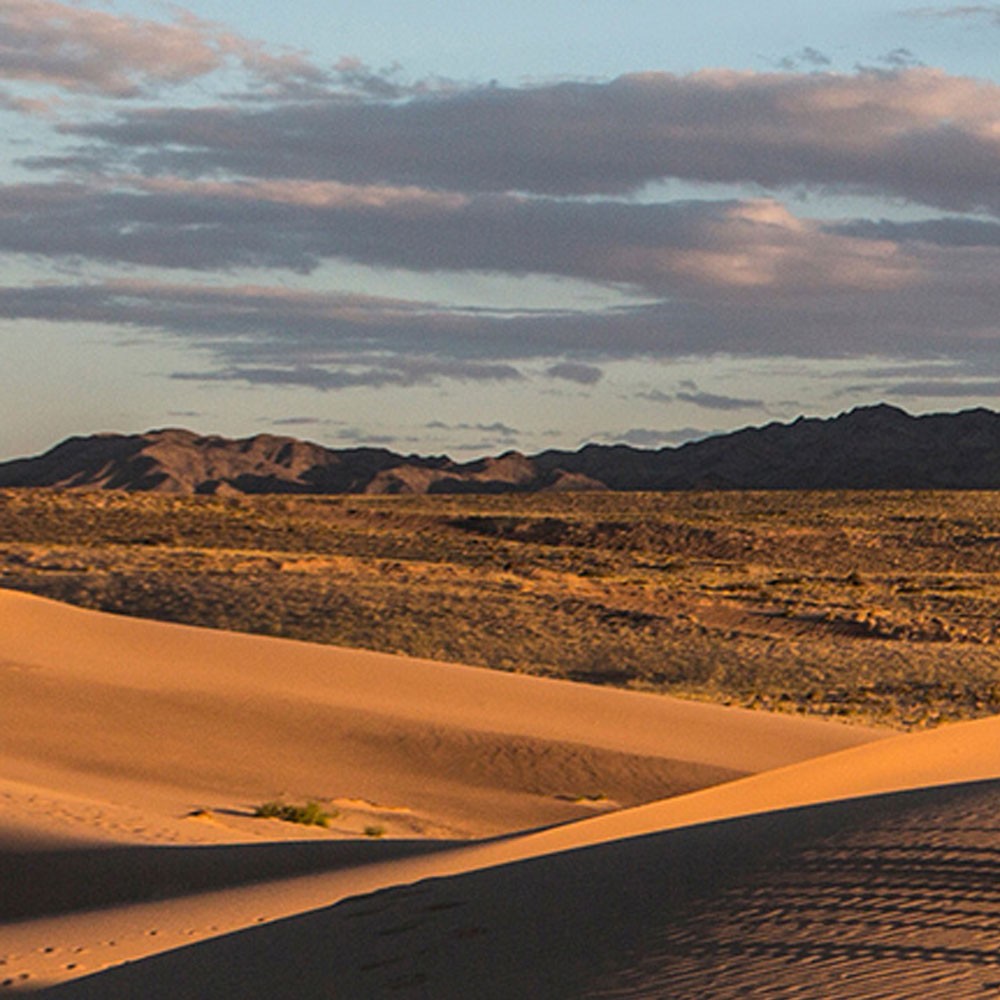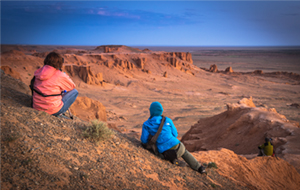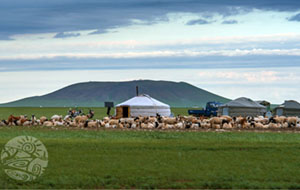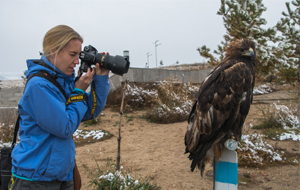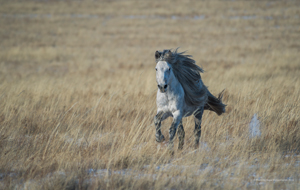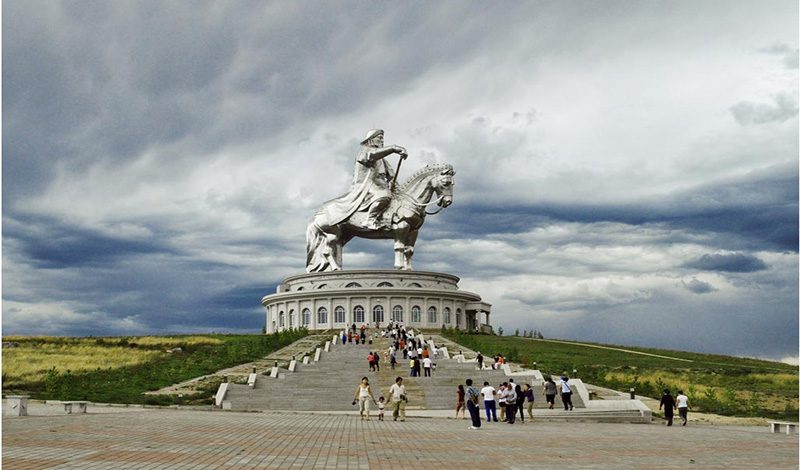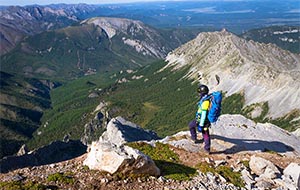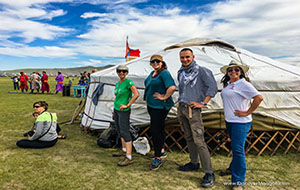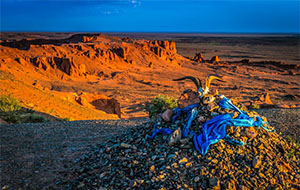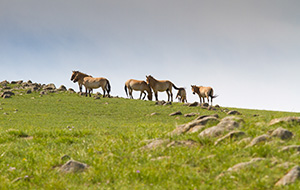
Dinosaurs lived between 230 and 65 million years ago, in a time known as the Mesozoic Era. This was many millions of years before the first modern humans, Homo sapiens, appeared. Scientists divide the Mesozoic Era into three periods: the Triassic, Jurassic and Cretaceous.

Early days of Mongolian dinosaur discovery
Then palaeontologist at the American Natural History Museum Roy Chapman Andrews accidentally discovered some debris of dinosaur fossils back in 1922 in the Mongolian Gobi Desert, namely at Flaming Cliffs[1] or Bayanzak, during their Central Asiatic Expeditions en route to Beijing. Despite their initial intention to look for artefacts of early humans, such accidental discovery triggered him to come back to Mongolian Gobi two more times in the subsequent years and they all paid off. Andrews not only found few different species of dinosaur fossils, but also discovered the first ever dinosaur eggs during his expeditions to Mongolia.
Andrew’s expeditions to the Gobi introduced Mongolia to the rest of the world as the land of dinosaurs for the first time.
However, because of the ongoing domestic political turmoil in Mongolia, Andrew’s team was no longer able to continue their expeditions in Mongolia.

Mongolian dinosaur discovery during Soviet era
As of today, there are almost 500 different species of dinosaurs identified based on various artefacts and fossils found around the world. Out of these 500 species, around 80 species were found in Mongolia. Among those 80 species, some were believed to be as small as a chicken and some as gigantic as the size of 10-20 elephants combined. Substantial portion of such discoveries, in Mongolia, were made during the Soviet era; namely through joint Russian - Mongolian paleontological expeditions in the 1940s and joint Polish - Mongolian paleontological expeditions in the 1960-1970s. One of the most praised findings from stipulated time is the Fighting Dinos which believed to be killed during extreme sandstorm while fighting with each other.
Mongolian dinosaur discovery still lively in the present
Since 1990s, there have been multiple joint expeditions, namely those with Korean and Japanese palaeontologists, aiming to untangle more mysteries and reveal more hidden treasures in Mongolia. Discovery of the giant dinosaur footprint mentioned in the beginning is one of the most notable results of such expeditions. There have been tons of other discoveries which should have collectively contributed tremendously to the understanding of our planet, its evolution and potentially even future trends.
Unfortunately, being the land of dinosaurs has made Mongolia attractive not only to palaeontologists and adventure-seekers, but also to the greedy. Since 1990s, illegal fossil digging and poaching has increased. There have even been incidents of returning illegally exported dinosaur fossils from USA to Mongolia. The Institute for the Study of Mongolian Dinosaurs /ISMD/ is one of the most dedicated NGOs on the ground working towards educating children and raising general awareness about dinosaurs, particularly the sites and artefacts, that deserve much protection and preservation, through not only top-down but bottom-up approaches.
Interestingly, at Flaming Cliffs and other popular dinosaur sites in the Gobi, locals have still been able to spot some debris of the dinosaur fossils which they offer to tourists for sale. You may want to try out your luck and hunt (not dig!) for dinosaur fossils while hiking in the steppes or the cliffs as well.
In any case, we would be privileged to be your bridge to connect to the mysterious world of the dinosaurs in Mongolia!

















